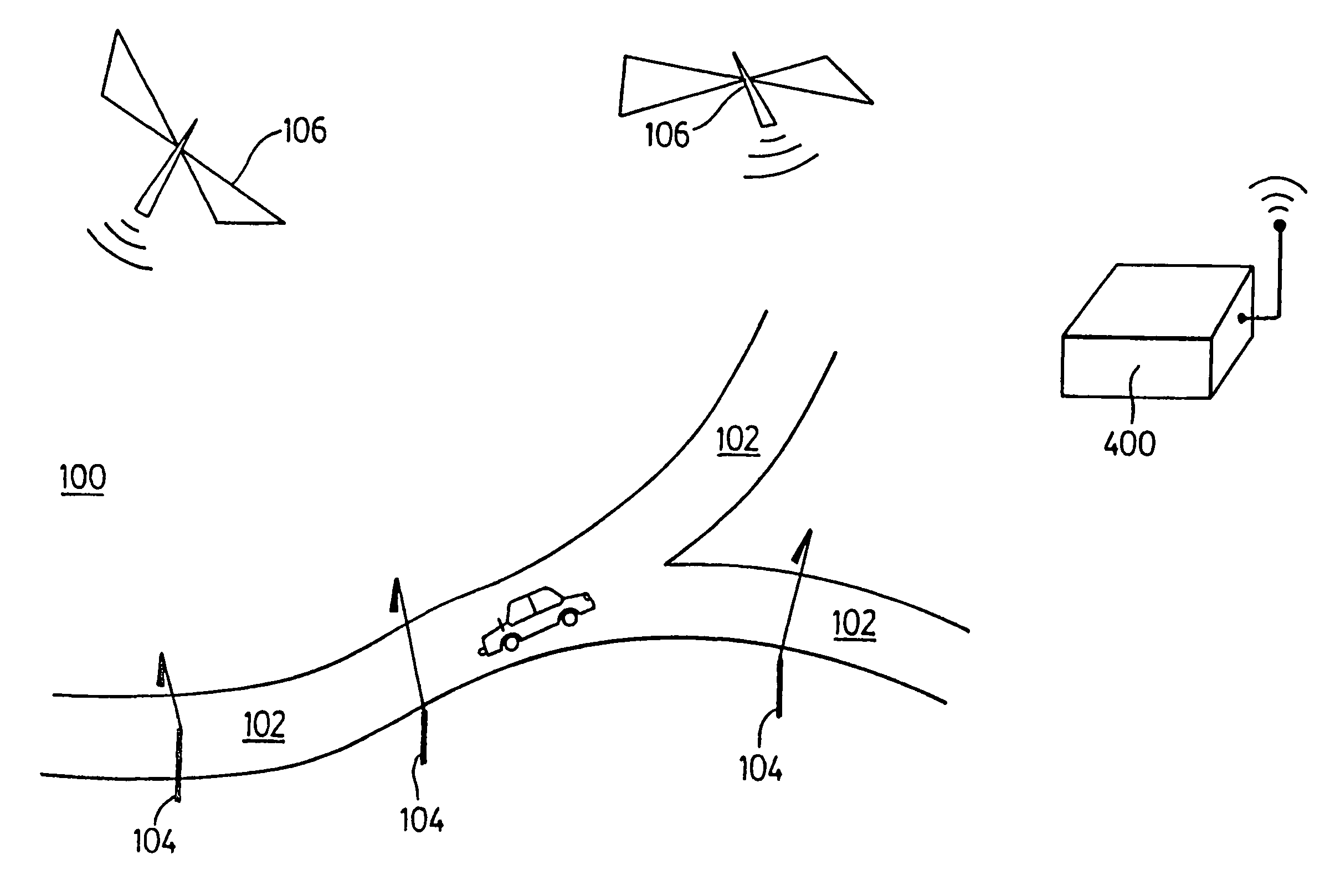Traffic control system with road tariff depending on the congestion level
a traffic control system and congestion level technology, applied in the field of traffic control systems, can solve the problems of ineffective reduction of traffic congestion on a macro-level level, increase in fuel consumption and road wear, and drop in air quality
- Summary
- Abstract
- Description
- Claims
- Application Information
AI Technical Summary
Benefits of technology
Problems solved by technology
Method used
Image
Examples
Embodiment Construction
[0018]FIG. 1 is a schematic representation of a vehicular traffic influencing system which influences vehicular traffic via a variable road tariff. The vehicular traffic influencing system, denoted generally as 100, is shown comprising a roadway having a plurality of road segments 102 traveled by a plurality of motor vehicles, a position identification system, and a traffic control server 400 in communication with the position identification system. In addition to the position identification system, the vehicular traffic influencing system 100 optionally includes one or more air quality sensors (not shown) in communication with the traffic control server 400. The air quality sensors are disposed in proximity to each of the road segments 102 along the length of each road segment 102, and monitor the air quality along each respective road segment 102.
[0019]The position identification system is configured to provide the traffic control server 400 with location data identifying the loca...
PUM
 Login to View More
Login to View More Abstract
Description
Claims
Application Information
 Login to View More
Login to View More - R&D
- Intellectual Property
- Life Sciences
- Materials
- Tech Scout
- Unparalleled Data Quality
- Higher Quality Content
- 60% Fewer Hallucinations
Browse by: Latest US Patents, China's latest patents, Technical Efficacy Thesaurus, Application Domain, Technology Topic, Popular Technical Reports.
© 2025 PatSnap. All rights reserved.Legal|Privacy policy|Modern Slavery Act Transparency Statement|Sitemap|About US| Contact US: help@patsnap.com



